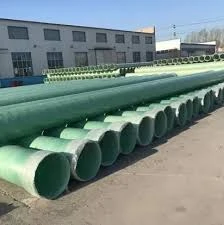
-
 Afrikaans
Afrikaans -
 Albanian
Albanian -
 Amharic
Amharic -
 Arabic
Arabic -
 Armenian
Armenian -
 Azerbaijani
Azerbaijani -
 Basque
Basque -
 Belarusian
Belarusian -
 Bengali
Bengali -
 Bosnian
Bosnian -
 Bulgarian
Bulgarian -
 Catalan
Catalan -
 Cebuano
Cebuano -
 China
China -
 China (Taiwan)
China (Taiwan) -
 Corsican
Corsican -
 Croatian
Croatian -
 Czech
Czech -
 Danish
Danish -
 Dutch
Dutch -
 English
English -
 Esperanto
Esperanto -
 Estonian
Estonian -
 Finnish
Finnish -
 French
French -
 Frisian
Frisian -
 Galician
Galician -
 Georgian
Georgian -
 German
German -
 Greek
Greek -
 Gujarati
Gujarati -
 Haitian Creole
Haitian Creole -
 hausa
hausa -
 hawaiian
hawaiian -
 Hebrew
Hebrew -
 Hindi
Hindi -
 Miao
Miao -
 Hungarian
Hungarian -
 Icelandic
Icelandic -
 igbo
igbo -
 Indonesian
Indonesian -
 irish
irish -
 Italian
Italian -
 Japanese
Japanese -
 Javanese
Javanese -
 Kannada
Kannada -
 kazakh
kazakh -
 Khmer
Khmer -
 Rwandese
Rwandese -
 Korean
Korean -
 Kurdish
Kurdish -
 Kyrgyz
Kyrgyz -
 Lao
Lao -
 Latin
Latin -
 Latvian
Latvian -
 Lithuanian
Lithuanian -
 Luxembourgish
Luxembourgish -
 Macedonian
Macedonian -
 Malgashi
Malgashi -
 Malay
Malay -
 Malayalam
Malayalam -
 Maltese
Maltese -
 Maori
Maori -
 Marathi
Marathi -
 Mongolian
Mongolian -
 Myanmar
Myanmar -
 Nepali
Nepali -
 Norwegian
Norwegian -
 Norwegian
Norwegian -
 Occitan
Occitan -
 Pashto
Pashto -
 Persian
Persian -
 Polish
Polish -
 Portuguese
Portuguese -
 Punjabi
Punjabi -
 Romanian
Romanian -
 Russian
Russian -
 Samoan
Samoan -
 Scottish Gaelic
Scottish Gaelic -
 Serbian
Serbian -
 Sesotho
Sesotho -
 Shona
Shona -
 Sindhi
Sindhi -
 Sinhala
Sinhala -
 Slovak
Slovak -
 Slovenian
Slovenian -
 Somali
Somali -
 Spanish
Spanish -
 Sundanese
Sundanese -
 Swahili
Swahili -
 Swedish
Swedish -
 Tagalog
Tagalog -
 Tajik
Tajik -
 Tamil
Tamil -
 Tatar
Tatar -
 Telugu
Telugu -
 Thai
Thai -
 Turkish
Turkish -
 Turkmen
Turkmen -
 Ukrainian
Ukrainian -
 Urdu
Urdu -
 Uighur
Uighur -
 Uzbek
Uzbek -
 Vietnamese
Vietnamese -
 Welsh
Welsh -
 Bantu
Bantu -
 Yiddish
Yiddish -
 Yoruba
Yoruba -
 Zulu
Zulu
Understanding Drill Rod Connections Fundamentals and Best Practices for Effective Performance
Understanding Drill Rod Connections The Basics
Drill rod connections play a fundamental role in the efficiency and effectiveness of drilling operations across various industries. These connections, often referred to as joints or couplings, serve to link individual lengths of drill rods together, enabling them to reach significant depths necessary for effective drilling. Understanding the basics of these connections is crucial for ensuring operational success.
At their core, drill rod connections are designed to facilitate the transfer of rotational forces and downhole weight from the drilling rig to the drill bit. A reliable connection must be able to withstand substantial torque and tension, as well as resist environmental factors such as abrasion and corrosion. Different types of connections are available, with two common formats being the male and female threaded joints and the flush joint configurations.
Male and female threaded joints involve one end of a drill rod being equipped with external threads, while the corresponding rod features internal threads. This design allows for a secure and tight fit, essential for maintaining the integrity of the connection under extreme pressure. These threaded connections are often used in applications where maintaining circulation of drilling fluids is necessary, as the threaded design can accommodate the flow of these fluids around the joint.
drill rod connections understanding the basics and its

On the other hand, flush joint connections are designed for specific applications where reducing the diameter of the string is advantageous, such as in confined boreholes. These connections boast a smooth outer profile with no protruding threads, making them less prone to snagging during drilling operations. They also minimize the risk of damage to the rods when navigating bends in boreholes.
When selecting the appropriate drill rod connection, factors like the type of material being drilled, the depth required, and the expected strain on the rods must be considered. Quality manufacturing is vital, as poor connections can lead to failures, which can not only halt operations but also pose safety risks.
Moreover, regular inspection and maintenance of drill rod connections help to extend their lifespan and maintain efficiency. Operators should ensure that all connections are free from wear, corrosion, and other forms of damage before each drilling operation.
In conclusion, understanding drill rod connections is essential for anyone involved in drilling activities. A solid grasp of the types of connections available, their applications, and best practices for maintenance can lead to enhanced performance, increased safety, and ultimately, better outcomes in drilling operations. By focusing on these fundamental aspects, industry professionals can ensure that their drilling efforts are executed smoothly and effectively.
Latest news
-
Exploring the Benefits of Top Hammer Drifter Rods for Enhanced Drilling PerformanceNewsJun.10,2025
-
High-Precision Fiberglass Winding Machine for GRP/FRP Pipe Production – Reliable & Efficient SolutionsNewsJun.10,2025
-
FRP Pipes & Fittings for Shipbuilding - Corrosion-Resistant & LightweightNewsJun.09,2025
-
Premium FRP Flooring Solutions Durable & Slip-ResistantNewsJun.09,2025
-
Premium Fiberglass Rectangular Tanks Durable & Lightweight SolutionNewsJun.09,2025
-
Tapered Drill String Design Guide Durable Performance & UsesNewsJun.09,2025









